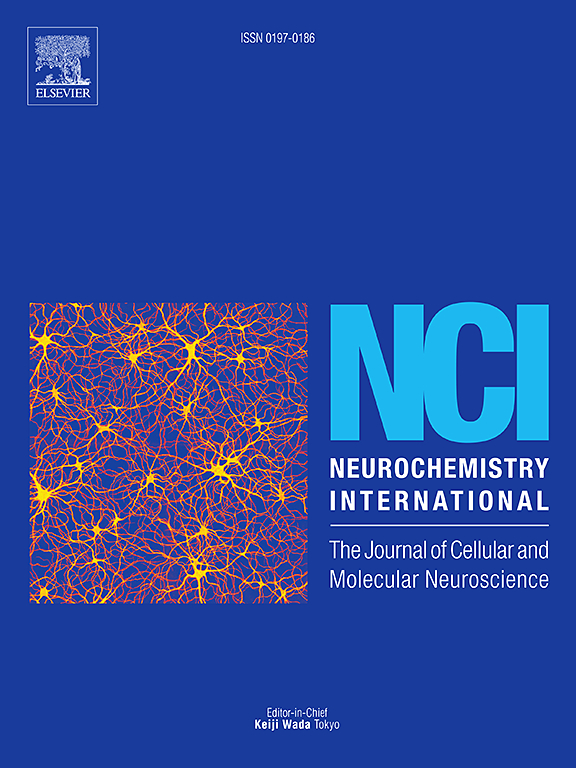肠道菌群、血浆代谢物和癫痫之间的因果关系解剖:一项孟德尔随机研究。
IF 4.4
3区 医学
Q2 BIOCHEMISTRY & MOLECULAR BIOLOGY
引用次数: 0
摘要
背景:癫痫引起沉重的疾病负担,肠道微生物群(GM)影响癫痫的进展,而与GM直接或间接相关的血浆代谢物可能起中介作用。然而,癫痫、GM和潜在代谢物介质之间的因果关系缺乏研究。方法:应用孟德尔随机化(MR)分析评估GM和血浆代谢物对癫痫的影响。遗传学仪器通过对欧洲血统的GM (n = 5,959)、血浆代谢物(n = 136,016)和癫痫(病例/对照= 12891/312803)的大规模全基因组荟萃分析获得。癫痫表型包括来自芬兰Gen R10数据库的所有癫痫、全面性癫痫和局灶性癫痫。两步磁共振(TSMR)发现潜在的介导代谢物。结果:共发现19个肠道微生物类群与癫痫风险有因果关系,其中无硝基虫门相关性最强(OR, 2.3;P = 0.009),有促进作用。我们还发现了21种与癫痫相关的血浆代谢物,其中最强的是东戊酯脂肪酸(OR, 1.12;P = 0.001),显示出促进作用。我们观察到游离胆固醇与大LDL中总脂质比值的间接影响,介导比例为-3.64% (95%CI,-7.22% ~ -0.06%;P = 0.046)。结论:本研究支持马氏福涅拉菌种类、大LDL游离胆固醇与总脂质比值与癫痫之间存在因果关系,以及大LDL游离胆固醇与总脂质比值在癫痫中的中介作用。本文章由计算机程序翻译,如有差异,请以英文原文为准。
Anatomizing causal relationships between gut microbiota, plasma metabolites, and epilepsy: A mendelian randomization study
Background
Epilepsy causes a heavy disease burden, and the gut microbiota (GM) influences the progression of epilepsy, while plasma metabolites directly or indirectly associated with GM may play a mediating role. However, the causal relationships between epilepsy, GM, and potential metabolite mediators are lack of investigation.
Methods
Mendelian randomization (MR) analysis was applied to estimate the effects of GM and plasma metabolites on epilepsy. Genetic instruments were obtained from large-scale genome-wide meta-analysis of GM (n = 5959), plasma metabolites (n = 136,016), and epilepsy (Cases/controls = 12891/312803) of European ancestry. Epilepsy phenotypes included all epilepsy, generalized epilepsy and focal epilepsy from the Finn Gen R10 database. And two-step MR (TSMR) to discover the potential mediating metabolites.
Results
In total, we found 19 gut microbial taxa to be causally associated with the risk of epilepsy, among which Omnitrophota phylum had the strongest association (OR, 2.3; P = 0.009) with promoting effect. We also identified 21 plasma metabolites associated with epilepsy, the strongest ones of which are eastotal fatty acids (OR, 1.12; P = 0.001) that exhibited a facilitating effect. We observed indirect effects of free cholesterol to total lipids ratio in large LDL in associations between Fournierella massiliensis species and epilepsy, with a mediated proportion of −3.64% (95%CI, -7.22%∼-0.06%; P = 0.046).
Conclusion
This study supports a causal link between Fournierella massiliensis species, free cholesterol to total lipids ratio in large LDL and epilepsy, as well as a mediating effect of free cholesterol to total lipids ratio in large LDL in epilepsy.
求助全文
通过发布文献求助,成功后即可免费获取论文全文。
去求助
来源期刊

Neurochemistry international
医学-神经科学
CiteScore
8.40
自引率
2.40%
发文量
128
审稿时长
37 days
期刊介绍:
Neurochemistry International is devoted to the rapid publication of outstanding original articles and timely reviews in neurochemistry. Manuscripts on a broad range of topics will be considered, including molecular and cellular neurochemistry, neuropharmacology and genetic aspects of CNS function, neuroimmunology, metabolism as well as the neurochemistry of neurological and psychiatric disorders of the CNS.
 求助内容:
求助内容: 应助结果提醒方式:
应助结果提醒方式:


